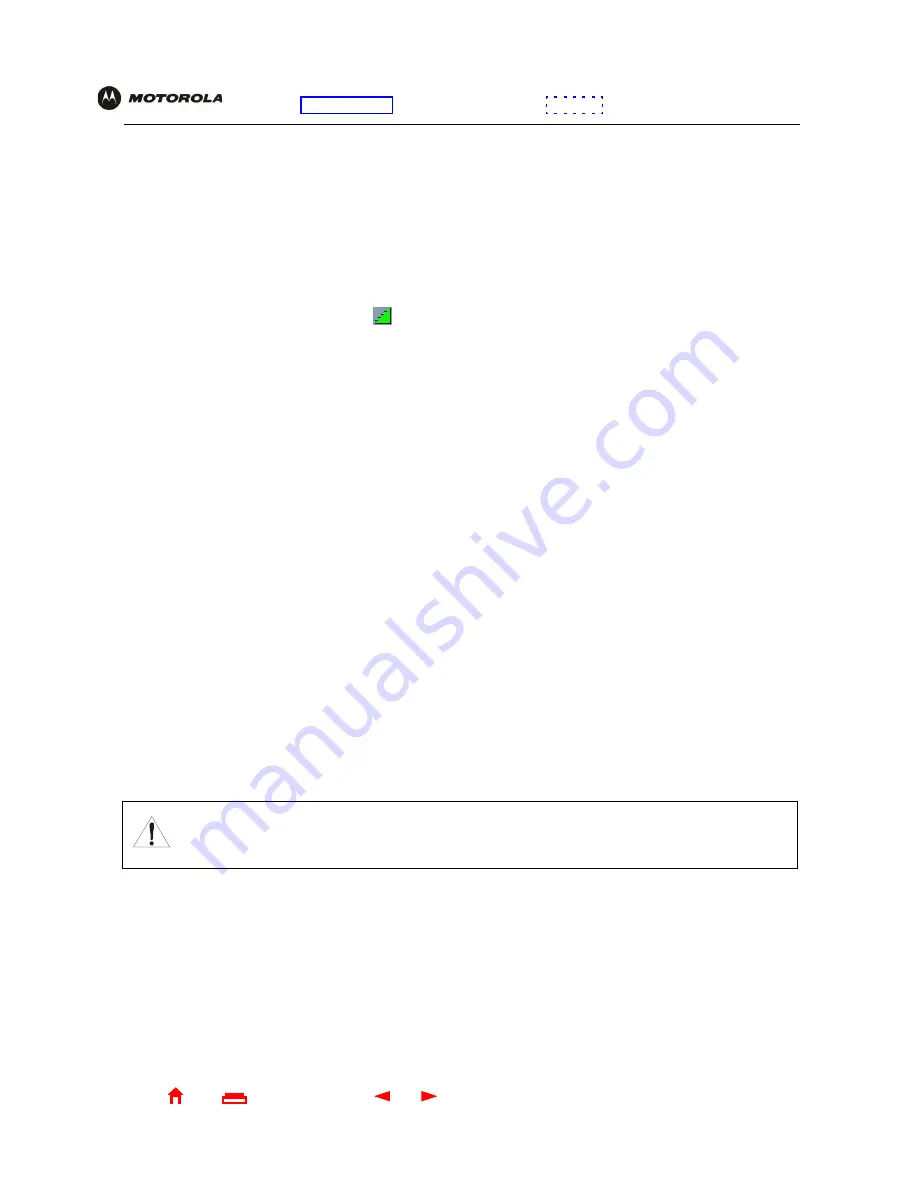
76
SBG1000 User Guide
Home
X
Exit
Overview Installation Troubleshooting Contact
FAQ Specifications Glossary License
Configuration:
Basic Gateway TCP/IP Wireless Print Server USB
Configuring the Wireless Clients
For each wireless client computer (station), install the wireless client card or adapter — such as a Motorola
PCC11b wireless card or Motorola USB11b wireless adapter — following the instructions supplied with the card or
adapter.
Configure the card or adapter to obtain an IP address automatically. The Motorola PCC11b wireless card and
Motorola USB11b wireless adapter are supplied with a client configuration program called Wireless Client Manger,
which is installed in the Windows Startup group.
If Wireless Client Manager is running, the
icon is displayed on the Windows task bar. Double-click the icon to
launch the utility.
After you correctly set the network name and WEP key on the client computer to match the SBG1000, you should
be able to use the computer to surf the Internet.
Configuring a Wireless Client with a Network Name (ESSID)
To distinguish it from other nearby wireless LANs, you can identify your wireless LAN with a unique network name
(also known as a network identifier or ESSID). When prompted for the network identifier, network name, or ESSID,
type the
name
set in the ESSID field on the
Wireless > NETWORK Page
in the SBG1000 Setup Program. For
more information, see “
Configuring the Wireless Network Name on the SBG1000
”.
After you specify the network name, many wireless cards or adapters automatically scan for an
access point
such
as the SBG1000 and the proper channel and data rate. If your card requires you to manually start scanning for an
access point, do so following the instructions in the documentation supplied with the card.
Never provide the ESSID to anyone who is not authorized to use your wireless LAN.
Configuring a Wireless Client for WEP
If shared key Authentication is enabled and a WEP key is set on the SBG1000 as described in “
Configuring WEP
on the SBG1000
”, you must enter the same WEP key on the wireless client. The SBG1000 cannot authenticate a
client if:
•
Shared key Authentication is enabled on the SBG1000 but not on the client
•
The client WEP key does not match the SBG1000 WEP key
Caution!
If shared key authentication is not enabled and no WEP key is set, there is no encryption for wireless
data.
You must configure the same WEP key on the SBG1000 and all wireless
clients
.
Never provide
the WEP key to anyone who is not authorized to use your wireless LAN.






























